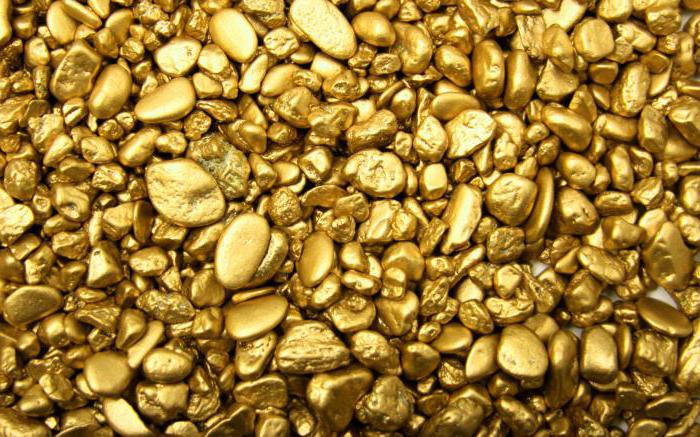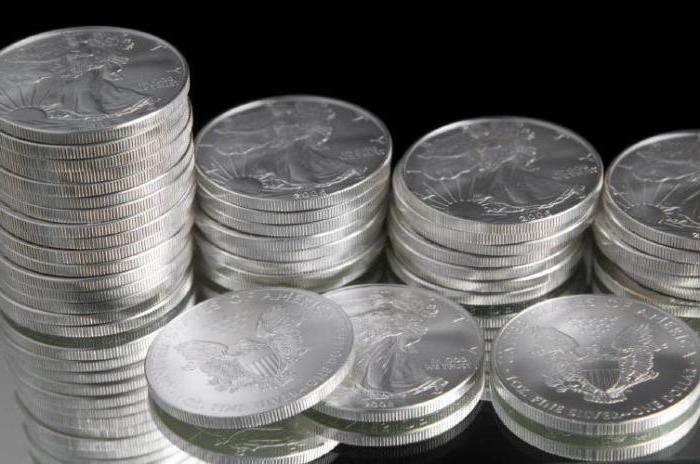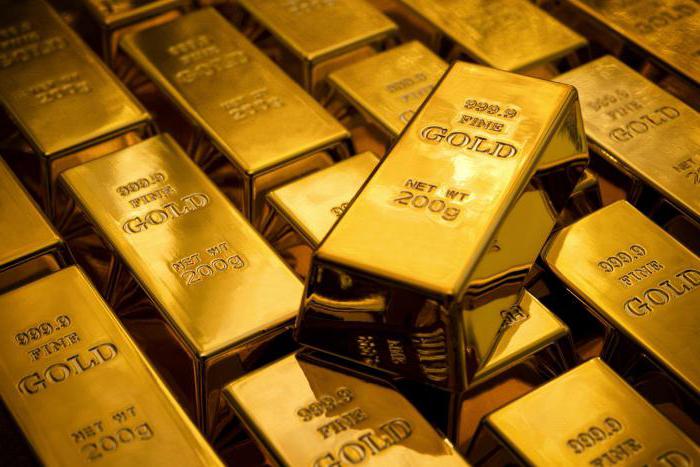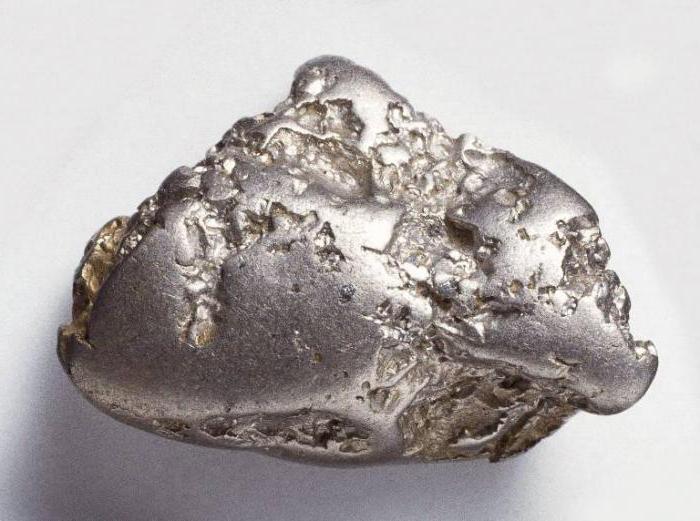The term "precious metals" itself means substances that have a much higher cost in comparison with other materials. Their value is primarily due to special chemical characteristics: these substances do not lend themselves to corrosion and destruction, retain their appearance for a long time. Moreover, in nature there are quite few reserves of precious metals, and their mining is sometimes extremely difficult. There are eight types of noble metals, each of which has found application in its field.

Precious Metals List
The following precious metals are known:
- Gold.
- Silver.
- Platinum.
- Rhodium.
- Osmium.
- Iridium.
- Ruthenium.
- Palladium.
Some scientists highlight another element that can be attributed to noble metals - technetium. However, due to its radioactivity, it is not included in the general classification.
Each of the materials in nature is found either in the form of nuggets, or as part of ore or alloys. There are not so many precious metal deposits across the Earth, therefore, their development is carried out under the strict control of those state enterprises in whose territory they are located.

Characteristics of precious metals
Consider the main characteristics of precious metals:
- Gold, or aurum (Au) - 79th element of the periodic table, a metal with a natural sheen and yellow color. Has a density of 19.32 g / cm3melts at a temperature of 1064aboutC. Gold is highly ductile, easily processed and molded, in addition, it is not subject to corrosion. It can be dissolved only in a mixture of nitric and perchloric acids in a ratio of 1: 3.
- Silver, argentum (Ag) is in the 47th place in the periodic table of chemical elements, has a characteristic white color with brilliance. The density of silver is 10.5 g / cm3, and it can be melted at 961.9aboutC. Among the advantages of silver, its ductility and ductility, ease of processing and forging, as well as thermal and electrical conductivity and reflectivity (up to 95%) are distinguished. Despite its resistance to moisture, silver can react with acidic and alkaline environments, as a result of which it begins to become covered with a black patina.
- Platinum (Pt) in the periodic table is 78th. The metal is white, shiny. Platinum has a higher density (21.45 g / cm3) and melting point (1772aboutWITH). In addition, the metal is not soluble in any liquids except aqua regia (a mixture of perchloric and nitric acids). Platinum is ductile, stretches well, although it is a refractory material. In addition, it is not oxidized and is not exposed to chemicals. In its pure form, this metal does not occur; it can be isolated only from alloys with noble and non-precious non-ferrous metals.

Noble Platinum Metals
Five more types of precious metals come from the platinum category:
- Palladium (Pd) - the 46th element of the periodic system, has a silver-white color. The melting point is 1552aboutC, and its density is 12.02 g / m3. This is the metal with the smallest mass among others from the discharge of platinum. Moreover, it is extremely resistant to aggressive environments and chemicals. Among other advantages of palladium, plasticity, ease of processing and polishing, and the ability to preserve shine can be noted.
- Rhodium (Rh) is a white and blue-tinted metal located at position 45 of the periodic table.Among the chemical characteristics, its high density is noted - 12.42 g / m3and also the melting point - 1960aboutC. This is one of the refractory metals, together with sufficient hardness it is brittle. Rhodium is highly reflective, as well as resistant to water, oxygen, not affected by any acids. Only alkaline cyanide mixtures dissolve rhodium.
- Ruthenium (Ru) is an element of the periodic system with 44 serial numbers. This white metal with a silver tint in appearance is very similar to platinum. However, it is distinguished by its high hardness with simultaneous brittleness, as well as very difficult fusibility. Ruthenium melts at 2950aboutC, and its density is 12.37 g / m3. A distinctive feature is its resistance to chemical attack. This is the rarest of the platinum group metals.
- Iridium (Ir) - located on the 77th place in the table of chemical elements, a precious metal painted white with a gray tint. The main qualities of iridium are high refractoriness, brittleness and, at the same time, increased hardness. The density is 22.42 g / m3and the melting point is 2450aboutC. This is the reason for the difficulties in its processing, since it is possible to work with it only under high pressure and at high temperature. In addition, this metal does not interact with any chemical compounds, be it alkali, acid, or mixtures thereof.
- Osmium (Os) - an element from the group of platinum metals, ranking 76th in the periodic table. This material is the most difficult to process, extremely fragile, but at the same time it is very hard and extremely refractory. The density of osmium is 22.48g / m3, and its melting point is the highest among platinum metals - 3047aboutC. The peculiarity is its pungent smell, as well as absolute resistance to any alkaline or acidic environments.

Areas of application of precious metals
Each of the noble metals has its own scope. Precious metals are used:
- In the manufacture of jewelry.
- For minting coins of various denominations, as well as commemorative and jubilee banknotes.
- As a hard currency for investing and opening deposits in banking institutions.
- In mechanical engineering for the production of various parts.
- In the field of radio and electrical engineering, microelectronics, as well as in the field of high technology.
- In the chemical industry, as well as medicine.
- In the space industry.
Investing in precious metals
Is it profitable to invest hard currency in a bank? Precious metals are the most stable currency, which, if invested successfully, can increase the owner’s profit and also protect it from market fluctuations. Banking practice around the world depersonalized metal accounts, which may be held as deposits or participate in exchange transactions. In banking operations involved: gold, platinum, palladium and silver.

Precious metal products
A large number of precious metals are used in the manufacture of jewelry. Moreover, metals can be used both in pure form and in alloys, while they reinforce and compensate for each other's qualities. What is the most popular precious metal in jewelry? Basically, three metals are used, which are known since ancient times: gold, silver and platinum.
What is the content of precious metals in jewelry? Their test depends on this.
Precious metal coins
For the manufacture of banknotes, that is, coins, precious metals have been used for many centuries, since this is the most stable currency. Currently, they issue anniversary, collectible banknotes, and also use precious metal coins as a means of investment.

Precious metal and its content
The value of certain parts located in electrical engineering or automobiles depends on the content of precious metals in them. Information on this can be found on the manufacturer’s sites, as well as in special references.








